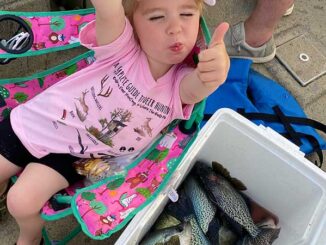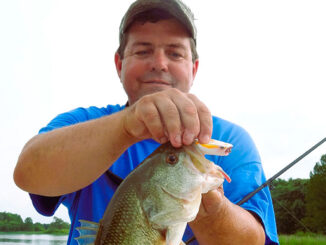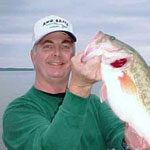Spring slab patterns for Kerr Lake
Joe Jordan with a typical catch of Kerr Lake spring crappie. (Picture by Terry Madewell)
For crappie

Jessica’s big slab crappie of Harkey’s Taxidermy in Vale. […]

Molly Joyner went crappie fishing at Lake Wateree April 2, 2024, and said it deserves two thumbs up! […]

During May, anglers can expect hot action from just about every species of fish that swims in the Santee Cooper lakes. […]

Copyright 1999 - 2024 Carolina Sportsman, Inc. All rights reserved.
Be the first to comment